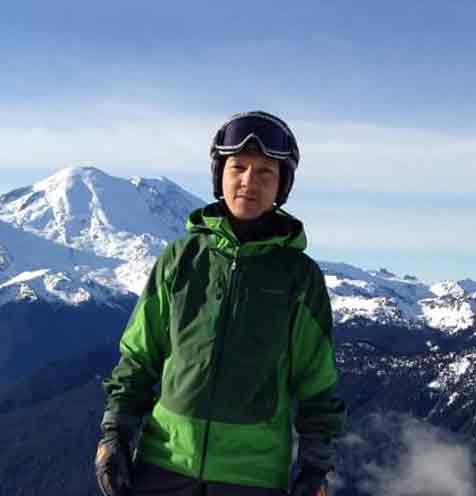Equipments Checklist
The main emphasis while trekking is on keeping warm and dry while still being lightweight.
Trekking equipments are available in Kathmandu, Pokhara and Namche Bazzar. You should bring a rucsac or backpack for gear required during the day. Your pack should contain items such as warm clothes, jacket, camera, water bottles, personal first aid kit and snacks. The weight limit is 5kg. A porter will carry the rest of your personal equipment packed in a duffel or kit bag. The weight limit for your duffel bag is 15 kg however it is different in case of peak climbing and expedition
FOOTWEAR
- Hiking Boots with ankle support. Make sure they are comfortable and you have worn them in before arriving in Nepal.
- Camp Shoes or Tennis Shoes
- Thick, warm wool and day hiking socks
- Camp Sandle
- Gaiters (Optional )
- Plastic bag to carry spare shoe
CLOTHING
- Lightweight Trekking pants
- Synthetic T-shirts, long-sleeve shirts
- Synthetic hiking pants, Zip-off pants
- Trekking trousers
- T-shirts – Lightweight, quick-drying
- Long-sleeved shirt
- Fleece jacket with wind-Stopper (With wood)
- Down vest and/or jacket
- Rain jacket or poncho (Gore-tex or equivalent)
- Rain pants (Gore-tex or equivalent)
- Down jacket medium weight
- Fleece or wool pants
- Synthetic Underwear
- Women sports bras, synthetic(for women)
- Waterproof (preferably breathable fabric) shell pants
- Long sleeve tops or shirts (not cotton).
- Micro fleece.
- Mid to heavyweight fleece or synthetic/ primaloft to
HEAD & GLOVES
- Fleece gloves.
- Warms mittens and/or gloves.
- Wool or fleece hat.
- Sun hat
- Warm hat wool or synthetic that covers your ears
- Bandana or scarf (eg. Buff Headwear).
- Head torch. Bring extra batteries.
- Sunglasses with UV Protection
ACCESSORIES
- Lightweight Sleeping bag
- Trekking poles
- Basic First Aid Kit
- Daypack (Ruck Sack): Recommended size is around 30 litres. You need to have enough space to carry water
bottles, camera, snacks and extra clothing. The pack should have a good waist belt. It is also a good
idea to bring a rain cover to keep the contents dry
- Fleece or silk liner for your sleeping bag
- Stuff sacks for keeping your gear dry and organised (Optional )
- Thermo-rest sleeping (optional)
- Water bottles
- Small wash towel
- Sunscreen and lip salve
- Water purification tablets (Pristine, Biox Aqua or Aqua Mira).
- Favorite snack food.(Optional)
- Books and cards etc.(Optional)
- Camera with spare batteries and memory cards.(Optional)
- Insurance certificate.
- Earplugs (optional).
- Hand sanitizer
- Any personal medications
TOILETERS
- Quick drying towel (medium sized)
- Soap (preferably biodegradable)
- Tooth brush/paste (preferably biodegradable)
- Deodorants
- Face and body moisturizer
- Nail clippers
- Small mirror(optional)
- Tissue paper/ toilet roll
- Anti-bacterial Hand wash etc ….
FOR PEAK CLIMBING & EXPEDITIONS
- Long sleeved cotton/woolen shirts
- Sun hat
- Long cotton hiking shorts
- Fleece/wool for climbing
- Lightweight fleece
- Sleeping pad (karrimat) or thermarest
- Down high altitude sleeping bag
- Down jacket/trousers/vest
- Light cotton athletic socks and wool socks
- Water proof climbing jacket
- Head torch/batteries/bulbs
- Climbing sunglasses
- Lightweight thermal/insulated ski gloves
- Sun screen
- Walking poles
- Warm climbing trousers
- Wool long underwear
- Mountaineering boots graded B1 or B2 to accommodate crampons
- Trekking boots and hut shoes
- 4 season sleeping bag (comfort temperature -20C) and compression sack
CLIMBING GEARS
- Climbing harness
- Ice axe
- Crampons
- Plastic Mountaineering boots
- Ascender/Descender/Abseil device
- Helmet
- Screwgate karabiners (2 locking , 2 unlocking )
- 2 tape slings 22 cm
- 1 pair climbing getter
- Head lamp
Conclusion
As the weather condition is unpredictable in the Himalayan region, you need to be prepared at all times. A day can start sunny with clear skies and later become cold and windy at the high altitudes.
Sometimes, it can rain and snow during the trekking period.
You need to remember that for a successful trekking journey, your physical comfort must be the first priority.
Note:
Please note that these items listed above will vary according to the season ,trek duration and service you take with Adventure Sherpa Tracks . Please remember that your luggage will be carried by the porter, but you need to carry a daypack on your own . We also suggest you pack only necessary items to keep the weight of your equipment to a minimum. Carrying a day pack only applies to the trekkers who take full package with us and those who take only guide they should bring the bag big enough to carry their own stuff.

